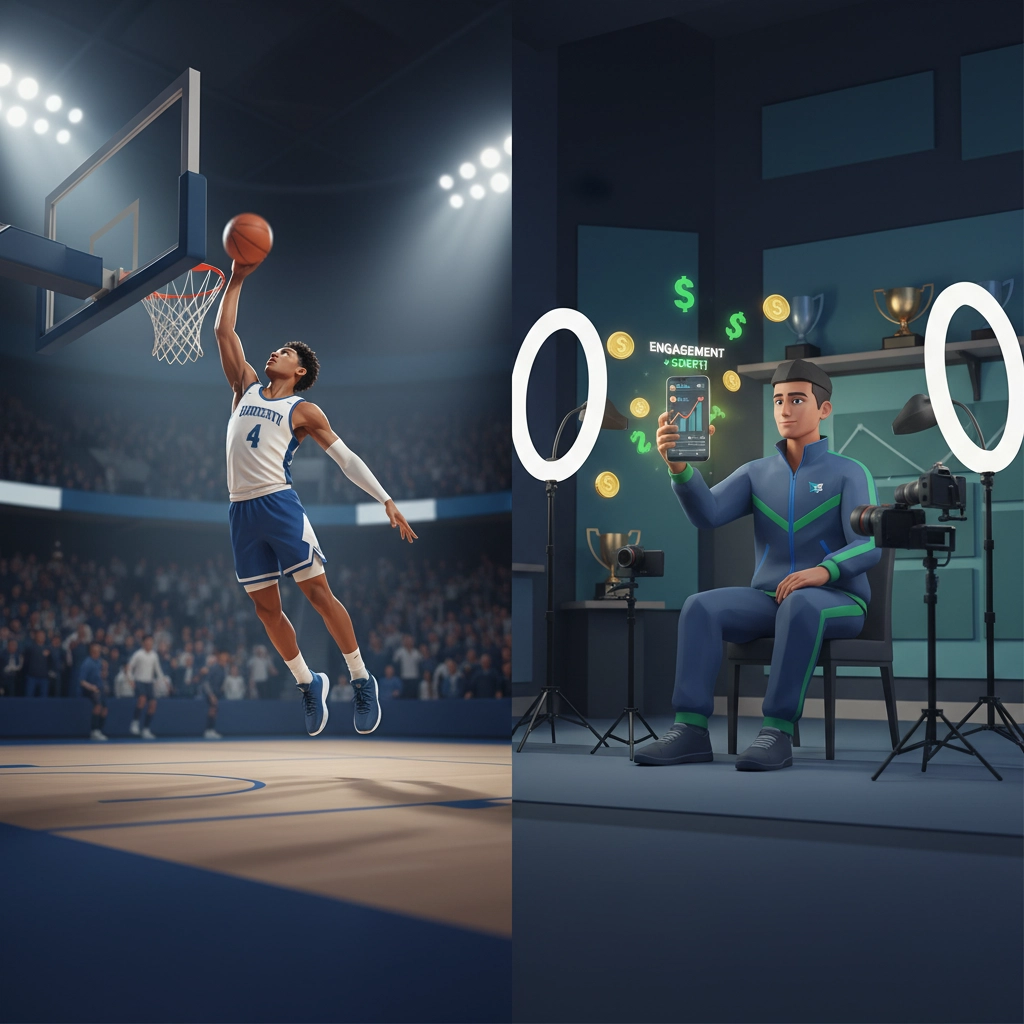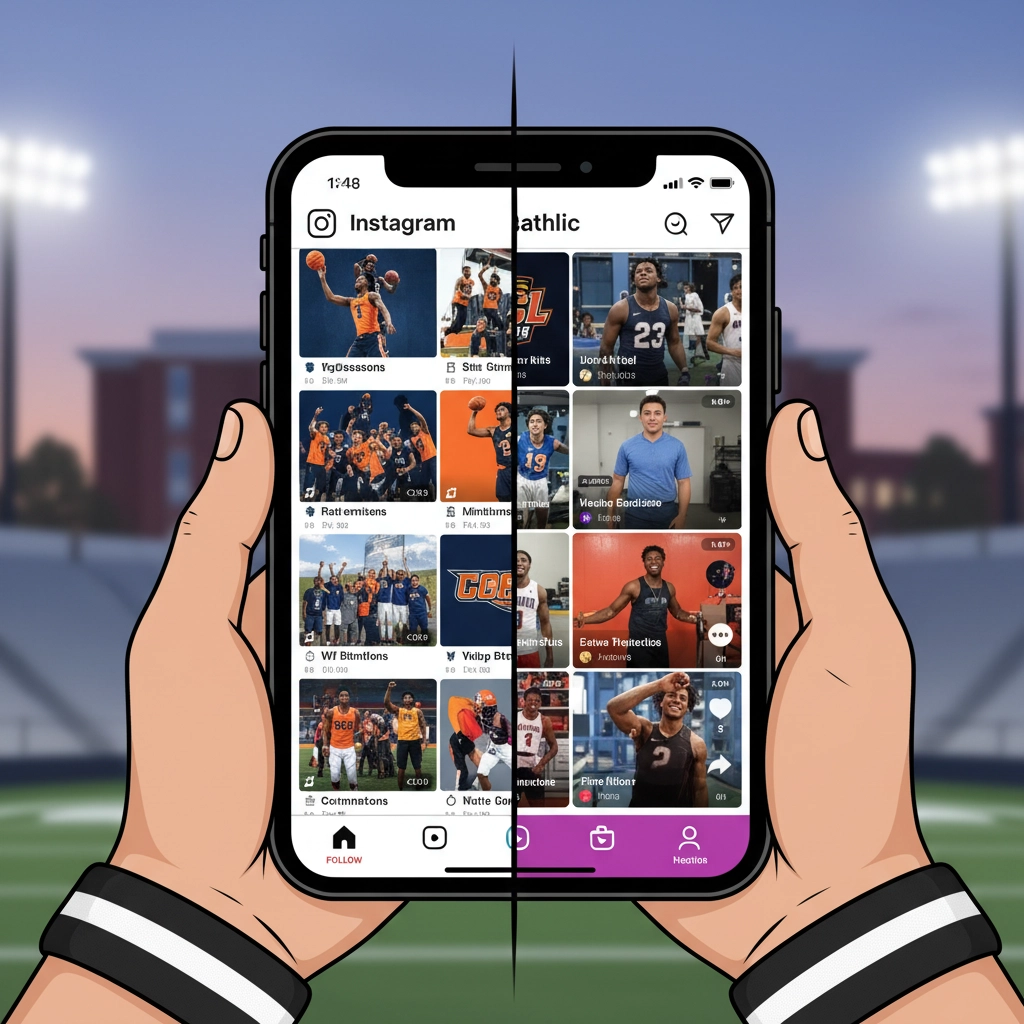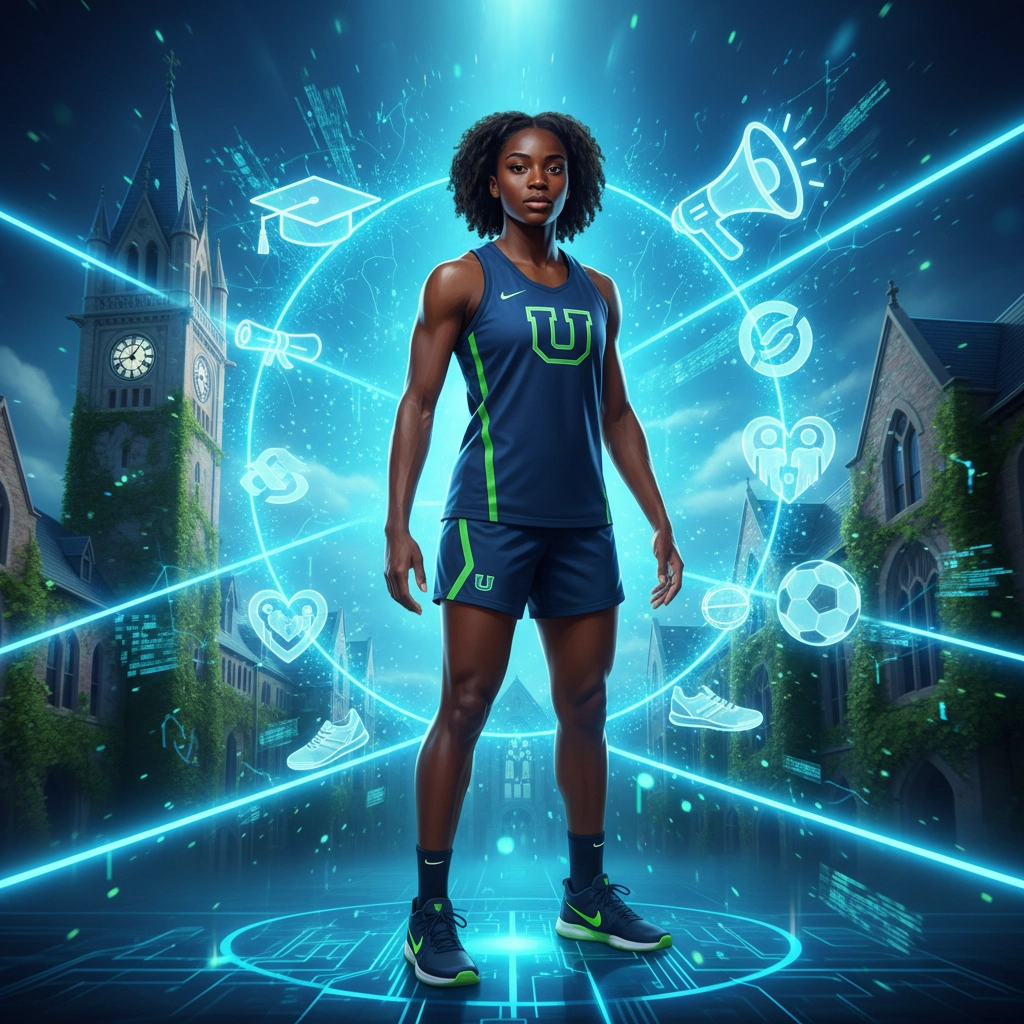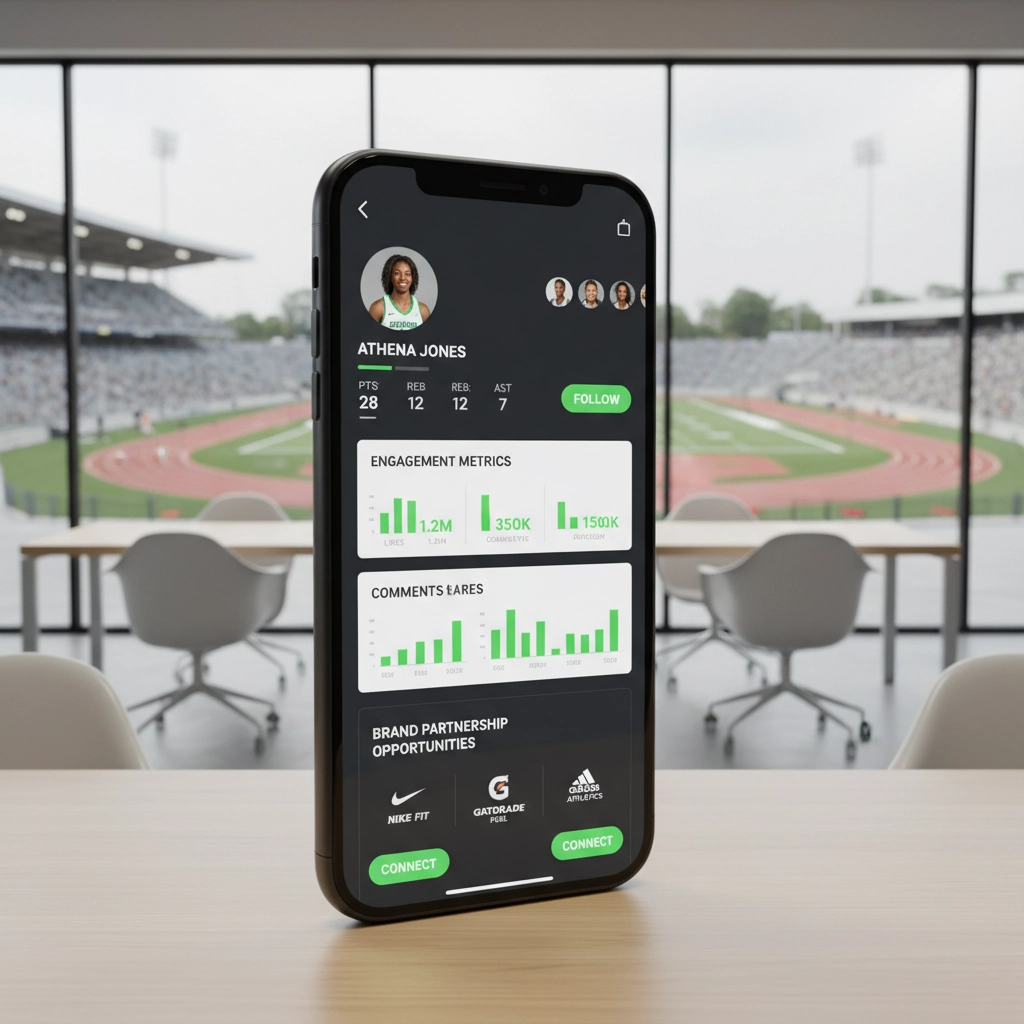The sports influencer landscape undergoes fundamental restructuring as college athletes emerge as a distinct category of content creators. This shift represents more than traditional celebrity endorsements. College athletes demonstrate measurable advantages in engagement metrics, authenticity, and audience connection that traditional influencers cannot replicate.
The NIL Policy Revolution
The NCAA's Name, Image, and Likeness policy implementation created immediate commercial opportunities for college athletes. Prior to this change, athletes with substantial social media followings could not monetize their influence. Athletes such as LSU gymnast Olivia Dunne, who maintains 4 million TikTok followers, and basketball player Shareef O'Neal, with 2.7 million Instagram followers, previously operated without compensation opportunities.
The policy shift enabled immediate market activity. Twin basketball players Hanna and Haley Cavinder from Fresno State secured partnerships with Boost Mobile within minutes of policy implementation. The telecommunications company indicated interest in partnerships with 400 college athletes, demonstrating corporate recognition of this market segment.

Measurable Performance Advantages
College athlete influencers achieve engagement rates of 10-15%, compared to 1-3% for standard influencers. This performance differential reflects genuine audience investment in athlete content. The college athlete demographic collectively maintains over 283.6 million social media followers, with 65-70% representing Gen Z consumers.
These metrics translate to measurable business outcomes. Social media promotion of upcoming games by college athletes correlates with increased ticket sales as audiences seek to observe promoted athletes in live competition. The direct connection between digital engagement and physical attendance demonstrates the commercial viability of college athlete influence.
Platform-Specific Content Strategies
College athletes employ sophisticated content strategies tailored to specific platform requirements. Research examining college football players' social media presence reveals deliberate content differentiation across platforms.
Instagram receives primarily athletic content and professional material. Athletes post highlight reels, official team photography, and polished performance documentation. This platform functions as a portfolio for athletic achievement and professional presentation.
TikTok content focuses on behind-the-scenes material, lifestyle documentation, and personal moments. The platform's algorithm favors authentic, unfiltered content that generates viral engagement. Athletes leverage this preference by sharing training moments, facility access, and informal interactions with teammates.

Authenticity as Competitive Advantage
College athletes possess credibility advantages that traditional influencers cannot replicate. Their social media presence develops through genuine athletic achievement rather than constructed personal brands designed for commercial purposes. Audiences engage with content documenting real training sessions, competitive outcomes, and academic balancing.
This authenticity extends to promotional content. When college athletes endorse products or services, the endorsement carries weight derived from their established credibility in competitive athletics. Traditional influencers must construct trustworthiness through consistent content production, while college athletes begin with established credibility in their athletic domain.
Evolving Athlete Identity
Research from the University of Florida surveying 200 athletes from Power Four universities documents fundamental changes in athlete self-perception following NIL implementation. Athletes increasingly identify as influencers with distinct public personas, marketing capabilities, and cause advocacy platforms.
Athletes now cultivate identities extending beyond traditional "student-athlete" models. They operate as community connectors, role models, and advocates for social causes. This expanded identity framework enables more comprehensive personal branding that resonates with diverse audience segments.
Many athletes utilize NIL platforms to promote social causes and build community connections beyond athletic performance. This approach creates multi-dimensional public personas that engage audiences through values alignment rather than solely entertainment consumption.

Brand Partnership Evolution
Corporate partnerships with college athletes differ fundamentally from traditional influencer marketing approaches. Brands access authentic connections with specific demographic segments through athlete partnerships. The college athlete audience demonstrates higher engagement rates and purchasing influence compared to traditional influencer audiences.
Partnership structures reflect these differences. Rather than one-time promotional posts, brands develop ongoing relationships with college athletes that integrate athletic achievement with product promotion. This approach creates sustained audience engagement rather than temporary promotional spikes.
Platform Infrastructure Requirements
The rise of college athlete influencers requires specialized platform infrastructure to support their unique needs. Traditional social media management tools designed for corporate accounts or entertainment influencers do not address the specific requirements of athlete personal branding.
Platforms like Fanz.us provide specialized infrastructure for athlete brand development. These platforms understand the intersection of athletic achievement and personal branding, offering tools designed for the sports community. They facilitate connections between athletes, fans, and brands within framework that recognizes the unique dynamics of sports influence.
The platform approach addresses several specific requirements. Athletes need tools that highlight athletic achievements while building personal brand identity. They require connection capabilities that maintain appropriate boundaries between professional athletic careers and personal brand development. They need brand partnership facilitation that aligns with NCAA compliance requirements and academic schedules.

Market Implications
The college athlete influencer phenomenon creates market implications extending beyond individual brand partnerships. Traditional marketing approaches that rely on celebrity endorsements or manufactured influencer relationships face competition from authentic athlete connections.
Brands must reconsider influencer marketing budgets and strategies to accommodate college athlete partnerships. The measurable performance advantages of college athlete engagement suggest budget allocation adjustments may optimize marketing return on investment.
Media companies and content platforms also face implications. College athlete content generates engagement rates that surpass traditional entertainment content in sports-adjacent categories. This performance suggests content strategy adjustments may be required to maintain audience engagement.
Future Trajectory
The college athlete influencer trend represents early-stage market development rather than temporary phenomenon. As NIL policies mature and athlete personal branding capabilities develop, the influence gap between college athletes and traditional influencers will likely expand.
Technological infrastructure supporting athlete brand development will continue evolving. Platforms specializing in sports community building and athlete brand management will develop more sophisticated tools addressing specific athlete needs.
The integration of college athlete influence with professional sports careers will create sustained market opportunities. Athletes who develop strong personal brands during college careers carry audience relationships into professional athletics, creating long-term brand partnership opportunities.
College athletes represent a fundamental shift in sports influence that combines authentic credibility, superior engagement metrics, and genuine community connections. This combination creates market advantages that traditional influencer approaches cannot replicate. The trend represents permanent market evolution rather than temporary disruption, requiring adjusted strategies from brands, platforms, and media companies operating in sports-adjacent markets.
